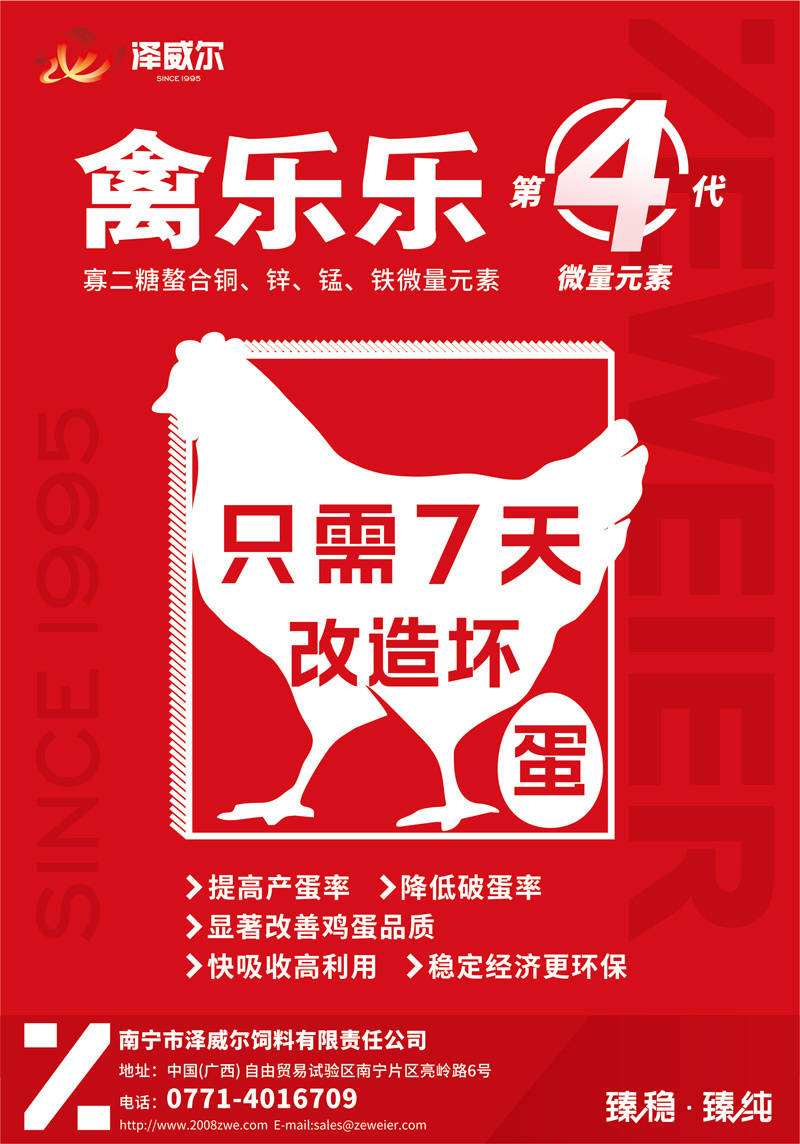19
2023
-
12
Growth characteristics and feeding recommendations for laying hens at different stages
my country is the world's largest producer and consumer of eggs. The annual output of egg poultry feed accounts for more than 13% of the total industrial feed output in the country, and has been rising steadily in recent years. Egg-laying chicken farmers must be very concerned about the growth characteristics of egg-laying chickens at various stages. Let us introduce the characteristics of egg-laying chickens from birth to egg laying, and how to feed them more reasonably.
Characteristics of brooding chickens (0-6 weeks old)
The intestines are not fully developed and the digestion ability is poor. They should be fed with high-quality, easily digestible feeds. It is not recommended to use too many unconventional raw materials in the diet at this stage. It is recommended to use puffed corn, puffed soybeans or fish meal to increase the feed intake and nutrient digestibility of brooding chickens and promote the healthy growth of chicks.
Characteristics of the early stage of rearing (>6 weeks to 12 weeks old)
The digestion and absorption capacity of the intestinal tract of laying hens is further enhanced. Therefore, high-quality protein sources such as fish meal can no longer be used in the diet at this stage. It is recommended to use wheat, bran, peanut kernel meal, rapeseed meal and corn DDGS to enrich the diversity of the diet and limit the amount of soybean meal.
Characteristics of the late rearing period (>12 weeks to 16 weeks of age)
The intestinal tract of laying hens has fully developed. It is recommended to use higher content of wheat, sorghum, sesame meal, rice bran meal, rapeseed meal, corn gluten meal and cottonseed meal to replace soybean meal, and reasonably apply enzyme preparations and other additives to reduce the negative effects of anti-nutritional factors in the raw materials. In addition, special attention should be paid to the balance of various amino acids in the diet at this stage.
In the early stage of laying, the cellulose level of the diet needs to be reduced and the content of high-quality protein needs to be increased. At this stage, the use of unconventional feed raw materials should be reduced as much as possible. It is to add laying hen poultry feed additives to the diet. Rapeseed meal, sesame meal, cottonseed meal, etc. can also be appropriately added to replace part of the soybean meal. At the same time, corn DDGS and other corn processing by-products and other raw materials are added to meet the nutritional needs of laying hens. During the peak period of laying, laying hens need to mobilize body reserves at a high speed to supply egg nutrition. Therefore, rapeseed meal, cottonseed meal, rice bran meal, sunflower seed meal, corn gluten meal, etc. should be appropriately used to replace soybean meal on the premise of meeting the amino acid needs, but the amount should not be too high. The body of laying hens is overdrawn in the late egg-laying period. Soybean meal can be replaced with corn germ meal, sorghum distiller's grains, corn protein powder and other raw materials to increase the feed intake of laying hens in the late egg-laying period, promote the digestion and absorption of nutrients and improve the color of egg yolk.

RELATED PRODUCTS






